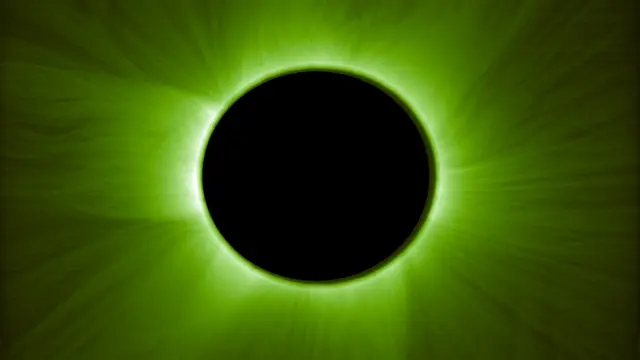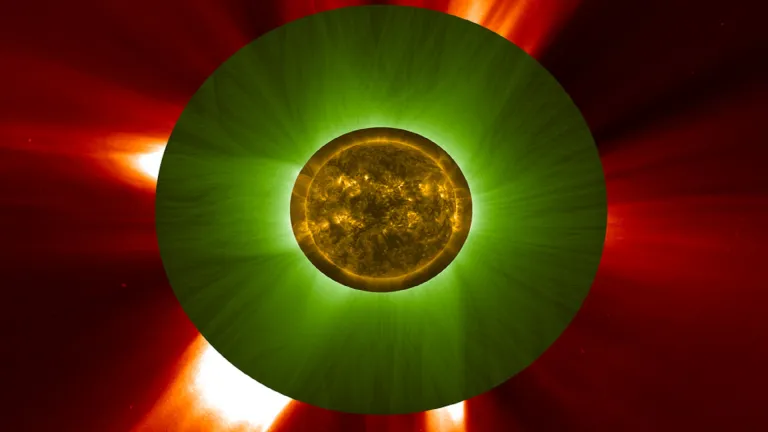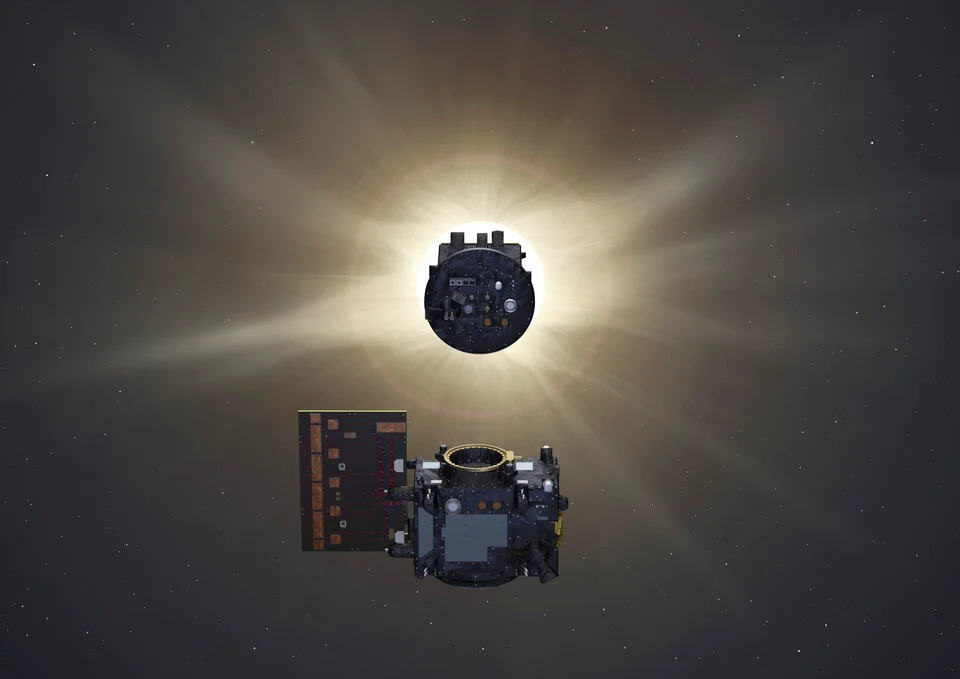The European Space Agency (ESA) has achieved yet another astonishing feat. The space agency has released the first images of the artificial solar eclipse created by the Proba-3 mission spacecraft. The Proba 3 spacecrafts were launched in December 2024 aboard the Indian Space Research Organization’s (ISRO’s) workhorse PSLV rocket.
The Proba-3 mission is dedicated to studying the solar corona, “the outermost layer of the Sun,’ like never before. The mission consists of two spacecraft, namely the ‘Coronagraph’ and the ‘Occulter.’ These two spacecraft, equipped with sophisticated, ultra-precise networking technologies, fly in perfect formation, separated by just 150 meters. The spacecraft are aligned such that the occulter blocks the sun’s bright disc and casts a shadow onto the coronagraph, thus creating a man-made eclipse.

Creating this eclipse and blocking the sun’s bright central part enables the ‘coronagraph’ to study the corona, which is otherwise harder to study. These observations of the corona, typically only possible during rare natural solar eclipses, can now be conducted once every 19.6-hour orbit for up to 6 hours.
The coronagraph spacecraft features advanced precision alignment and synchronization technologies, along with a sophisticated optical instrument. Developed by a Belgian-led industrial team, the ASPIICS instrument captures high-resolution images with minimal stray light, providing exceptional views of the solar corona. These images are essential for understanding solar wind, coronal mass ejections (CMEs), and the extreme heat of the Sun’s outer atmosphere.
In addition to ASPIICS, Proba-3 houses two other instruments: the Digital Absolute Radiometer (DARA), which measures solar energy output, and the 3D Energetic Electron Spectrometer (3DEES), which studies energetic particles in Earth’s radiation belts.

These detailed and state-of-the-art images captured by the Proba-3 not only validate ESA’s advanced formation flying technologies but also provide a critical data stream for refining solar simulations. Teams across Europe, including KU Leuven’s COCONUT modeling software, are already using the new images to enhance digital eclipse models and improve space weather forecasting.
“Current coronagraphs are no match for Proba-3, which will observe the Sun’s corona down almost to the edge of the solar surface. So far, this was only possible during natural solar eclipses,” said Jorge Amaya, Space Weather Modelling Coordinator at ESA.

